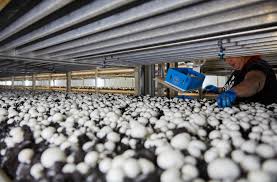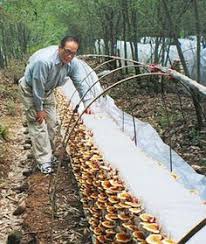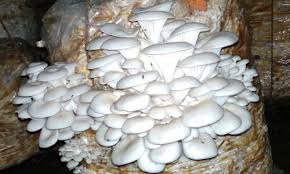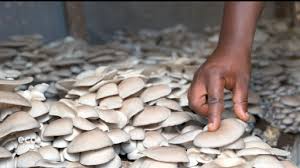Mushroom farming is an increasingly popular agricultural venture, attracting both novice and seasoned farmers due to its relatively low startup costs and quick returns. As people become more health-conscious and interested in sustainable food sources, the demand for mushrooms has surged. This trend presents a unique opportunity for individuals looking to enter the farming sector or diversify their existing agricultural practices.
Mushrooms are not only nutritious and versatile in culinary applications but also offer numerous health benefits, including boosting the immune system and providing essential vitamins and minerals.
Starting a mushroom farm can seem daunting at first, but with proper planning, education, and dedication, anyone can succeed in this niche market. The first step in mushroom farming is understanding the different types of mushrooms available for cultivation.
Common varieties include button, shiitake, oyster, and portobello mushrooms, each requiring specific growing conditions and techniques. Researching these varieties will help you decide which type aligns best with your interests and market demand.
Once you have selected a mushroom variety, the next step is to acquire the necessary materials and equipment. Mushrooms can be grown indoors or outdoors, and each method has its own set of requirements.
Indoor mushroom farming typically requires a controlled environment, including temperature, humidity, and light levels, to ensure optimal growth. On the other hand, outdoor farming can be more straightforward but may be subject to environmental factors like pests and weather conditions.
Setting up your growing space is crucial for success in mushroom farming. You will need to prepare a clean, sterile environment to minimize contamination, which can be a significant challenge in mushroom cultivation.
This process often involves sterilizing your growing medium, which can include materials like straw, sawdust, or wood chips, depending on the mushroom variety you choose. Proper sanitation and hygiene practices are essential to prevent the growth of unwanted mold and bacteria that can jeopardize your crop.
After preparing your growing environment and substrate, the next step is to inoculate your medium with mushroom spores or mycelium, the vegetative part of the fungus. This process is crucial as it kickstarts the growth cycle. Maintaining the right temperature and humidity levels during this incubation phase is vital to ensure successful colonization of the substrate by the mycelium. This period can last from a few weeks to several months, depending on the mushroom species.
Once your mushrooms begin to fruit, proper care and monitoring are essential. This includes maintaining humidity, temperature, and ventilation while also keeping an eye out for pests or diseases. Harvesting mushrooms at the right time is crucial to maximize yield and quality. Proper harvesting techniques can enhance the longevity of your crop and improve marketability.
Mushroom farming offers an exciting opportunity for those looking to explore the world of agriculture. By understanding the fundamentals of cultivation, setting up a suitable growing environment, and committing to ongoing care, anyone can embark on this rewarding journey. With careful planning and execution, you can turn your passion for mushrooms into a thriving business.
Benefits of Mushroom Farming

1. High Nutritional Value: Mushrooms are rich in essential nutrients, including vitamins, minerals, and antioxidants. They provide a good source of protein while being low in calories and fat. This nutritional profile makes them a popular choice for health-conscious consumers.
2. Rapid Growth Cycle: Mushrooms have a relatively short growth cycle, allowing farmers to achieve quick returns on investment. Many varieties can be harvested just a few weeks after planting, enabling multiple cropping cycles throughout the year.
3. Low Resource Requirements: Compared to traditional crops, mushroom farming requires less land, water, and other resources. This makes it an attractive option for small-scale farmers or those with limited space. Additionally, many mushrooms can be cultivated using agricultural byproducts, reducing waste.
4. Environmental Sustainability: Mushroom cultivation can contribute to environmental sustainability by utilizing organic waste materials, such as straw, sawdust, and coffee grounds, as substrates. This process helps recycle waste while producing nutritious food.
5. Economic Opportunities: The growing demand for mushrooms in the culinary market provides significant economic opportunities for farmers. With proper marketing strategies, farmers can access local, regional, and even international markets, potentially increasing profitability.
6. Therapeutic Benefits: Some mushrooms are known for their medicinal properties, which can contribute to overall wellness. Varieties like reishi, shiitake, and lion’s mane are often used in traditional medicine for their health benefits, offering additional market opportunities for farmers.
Read Also: Chiggers: Description, Damages Caused, Control and Preventive Measures
Types of Mushrooms for Farming

1. Button Mushrooms (Agaricus bisporus): One of the most commonly cultivated mushrooms, button mushrooms are versatile and widely used in various dishes. They are easy to grow and have a high market demand.
2. Shiitake Mushrooms (Lentinula edodes): Known for their rich flavor and numerous health benefits, shiitake mushrooms are popular in Asian cuisine. They are typically grown on logs or sawdust and have a longer cultivation cycle than button mushrooms.
3. Oyster Mushrooms (Pleurotus ostreatus): These mushrooms are known for their unique shape and delicate flavor. They grow quickly and can be cultivated on a variety of substrates, making them a favorite among small-scale farmers.
4. Enoki Mushrooms (Flammulina velutipes): Enoki mushrooms have a distinctive appearance with long, thin stems and small caps. They are popular in Asian dishes and are typically grown in cooler temperatures.
5. Lion’s Mane Mushrooms (Hericium erinaceus): Recognized for their unique appearance and potential cognitive benefits, lion’s mane mushrooms are gaining popularity in both culinary and medicinal markets. They can be cultivated on hardwood substrates.
6. Portobello Mushrooms (Agaricus bisporus): A mature form of button mushrooms, portobello mushrooms are prized for their meaty texture and flavor. They are often used as a meat substitute in various dishes.
Choosing the Right Location for Mushroom Farming
1. Accessibility: Select a location that is easily accessible for transportation of materials and products. Proximity to markets or distribution centers can facilitate sales and reduce transportation costs.
2. Climate Considerations: While mushrooms can be grown in various climates, specific temperature and humidity levels are ideal for different species. Ensure that the chosen location can be easily controlled for these environmental factors, especially for species requiring cooler conditions.
3. Space Requirements: Consider the amount of space needed for growing, processing, and storing mushrooms. A well-planned layout allows for efficient production and easy access to resources.
4. Proximity to Raw Materials: If you plan to use organic waste materials for substrate, choose a location near sources of these materials. This helps reduce costs and supports sustainable farming practices.
5. Water Availability: Mushrooms require adequate water for cultivation. Ensure that the selected location has reliable access to clean water for irrigation and maintaining humidity levels.
6. Safety and Security: A secure location is crucial for protecting your investment. Consider factors such as theft, vandalism, and natural disasters when choosing your site.
Preparing the Growing Environment
1. Selecting a Suitable Location: Choose a location that provides the right conditions for mushroom growth. Ideally, this area should be dark, cool, and humid, as mushrooms thrive in these environments. Consider using a basement, garage, or a dedicated growing room to maintain optimal conditions.
2. Temperature Control: Mushrooms generally prefer temperatures between 55°F and 75°F (13°C to 24°C), depending on the species. Use heating or cooling systems to regulate temperatures, ensuring they remain consistent throughout the growth cycle.
3. Humidity Management: Maintaining high humidity levels (around 80-95%) is crucial for mushroom growth. Consider using a humidifier or misting system to keep the environment moist. Regular monitoring with a hygrometer will help you maintain optimal humidity levels.
4. Ventilation: Proper air circulation is vital to prevent the buildup of carbon dioxide, which can hinder mushroom development. Ensure the growing area is well-ventilated with fans or open windows. However, avoid direct drafts that can dry out the substrate.
5. Cleanliness: Sterilizing the growing environment is essential to prevent contamination. Clean all surfaces and equipment thoroughly with a mixture of water and bleach or a suitable disinfectant before starting your mushroom farming.
Read Also: How to Grow, Use and Care for Torrey’s Bulrush Grass (Schoenoplectus torreyi)
Sourcing Mushroom Spawn

1. Understanding Mushroom Spawn: Mushroom spawn is the material used to propagate mushrooms. It typically consists of mycelium grown on a substrate, which can be in the form of grain, sawdust, or plugs.
2. Finding Reliable Suppliers: Purchase mushroom spawn from reputable suppliers or mushroom cultivation companies. Ensure that the spawn is fresh and free from contaminants to ensure successful growth. Local agricultural co-ops, gardening centers, or online stores often provide quality options.
3. Choosing the Right Spawn Type: Select the spawn type that matches your chosen mushroom species. There are different types of spawn, including sawdust spawn, grain spawn, and plug spawn, each suited for various cultivation methods and substrates.
4. Checking for Quality: When sourcing spawn, check for signs of contamination or spoilage. Good-quality spawn should have a healthy, white mycelium appearance and be free of any unusual smells or discoloration.
Substrate Preparation Techniques
1. Selecting the Right Substrate: The substrate is the material on which mushrooms grow. Common substrates include straw, sawdust, wood chips, and coffee grounds. Choose a substrate suitable for the specific mushroom species you are cultivating.
2. Pasteurization: To eliminate potential pathogens and pests, pasteurize the substrate before inoculating it with mushroom spawn. This can be done by heating the substrate to 160°F (71°C) for about an hour or by soaking it in hot water.
3. Mixing Spawn with Substrate: Once the substrate has cooled, mix the mushroom spawn thoroughly with the prepared substrate. Ensure an even distribution to promote healthy mycelium growth.
4. Packing the Substrate: Place the inoculated substrate in containers or bags, ensuring they are packed tightly but not overly compacted. This allows for good air circulation while preventing contamination.
5. Moisture Content: Maintain the right moisture content in the substrate, which should be around 50-60%. If the substrate feels dry, add a small amount of water and mix it in thoroughly.
Cultivation Methods for Mushrooms
1. Indoor Cultivation: This method involves growing mushrooms in a controlled environment, such as a basement, garage, or specially designed growing room. Use shelves or racks to maximize space, and maintain optimal conditions for temperature, humidity, and ventilation.
2. Outdoor Cultivation: Some mushrooms, like shiitake and oyster mushrooms, can be grown outdoors on logs or in beds. Select a shaded area and prepare the site by soaking logs or creating beds with organic matter.
3. Hydroponic Cultivation: This method uses water and nutrient solutions to grow mushrooms without soil. It’s less common but can be effective for certain mushroom species, allowing for precise control over nutrients and moisture levels.
4. Bag Cultivation: This popular method involves using plastic bags filled with prepared substrate. The bags are inoculated with spawn and placed in a controlled environment until the mushrooms start to fruit.
5. Tray or Container Cultivation: This technique uses shallow trays or containers filled with substrate. It is suitable for small-scale growers and allows for easy monitoring and harvesting.
Maintaining Optimal Growing Conditions
1. Temperature Control: Mushrooms have specific temperature requirements depending on the species. Most edible mushrooms thrive in temperatures between 55°F and 75°F (13°C to 24°C). Use thermostats and heaters to maintain consistent temperatures, especially during seasonal changes.
2. Humidity Levels: High humidity (80-95%) is essential for mushroom growth. Utilize humidifiers or misting systems to maintain moisture. Regularly monitor humidity with a hygrometer, and adjust your watering practices based on the readings.
3. Air Circulation: Proper ventilation prevents carbon dioxide buildup, which can inhibit mushroom growth. Ensure that your growing area has adequate airflow through fans or vents, but avoid strong drafts that can dry out the substrate.
4. Light Requirements: While mushrooms do not need direct sunlight, some light is beneficial for certain species, especially during the fruiting phase. Use low-intensity artificial lights to simulate natural conditions, providing around 12 hours of light daily.
5. Monitoring pH Levels: The pH level of your substrate can affect mushroom growth. Most mushrooms prefer a slightly acidic to neutral pH (around 5.5 to 7.0). Test the substrate regularly and amend it with lime or sulfur as necessary to maintain optimal pH levels.
Harvesting Mushrooms

1. Identifying Harvest Time: Mushrooms are typically ready for harvest when their caps have fully expanded but before they begin to drop spores. Check for visual signs: the cap should be firm and slightly curled under.
2. Proper Harvesting Techniques: Use a sharp knife or scissors to cut mushrooms at the base, leaving the mycelium intact. Avoid pulling or twisting mushrooms, as this can damage the mycelium and affect future yields.
3. Handling and Storage: Handle harvested mushrooms gently to prevent bruising. Store them in a cool, dark place in breathable bags or containers. Aim to use harvested mushrooms within a few days for optimal freshness, but they can last longer if refrigerated.
4. Post-Harvest Processing: Clean mushrooms by gently brushing off dirt or using a damp cloth. Avoid soaking them in water, as mushrooms are highly absorbent. You can also consider drying or freezing excess mushrooms for longer-term storage.
5. Record Keeping: Keep track of your harvest dates, weights, and any notable changes in yield. This information helps you analyze your growing conditions and make necessary adjustments for future crops.
Marketing Your Mushroom Products
1. Identifying Your Target Market: Understand who your potential customers are, such as local restaurants, farmers’ markets, grocery stores, or consumers interested in organic products. Tailor your marketing strategies to appeal to these groups.
2. Branding and Packaging: Develop a brand identity that reflects the quality of your mushrooms. Use attractive, eco-friendly packaging that highlights the benefits of your products. Include clear labeling with the variety, origin, and any certifications (like organic).
3. Online Presence: Establish an online presence through a website or social media. Share information about your mushroom varieties, growing practices, and recipes. Engage with customers through informative posts and respond to inquiries promptly.
4. Participating in Local Events: Join farmers’ markets, food festivals, and community events to showcase your mushrooms. Offering samples can attract customers and encourage sales. Networking with local chefs can also lead to partnerships for sourcing fresh mushrooms.
5. Education and Workshops: Conduct workshops or informational sessions about mushroom cultivation and cooking. Educating your audience can build a loyal customer base and increase interest in your products.
Common Challenges and Solutions in Mushroom Farming
1. Contamination: Contamination from mold, bacteria, or pests can ruin a mushroom crop.
Solution: Maintain cleanliness in your growing environment. Sterilize tools, substrates, and growing containers. Regularly inspect your mushrooms for signs of contamination, and promptly remove any affected areas.
2. Fluctuating Conditions: Sudden changes in temperature, humidity, or ventilation can stress mushrooms.
Solution: Invest in monitoring equipment (thermometers, hygrometers) and automated systems for climate control. Consistently check environmental conditions to make necessary adjustments.
3. Low Yields: Poor yields can result from inadequate nutrition, improper environmental conditions, or low-quality spawn.
Solution: Ensure you are using high-quality spawn and that your substrate is properly prepared and pasteurized. Regularly evaluate and adjust your growing conditions based on the needs of the mushroom species you are cultivating.
4. Pest Management: Pests like flies and mites can infest mushroom farms.
Solution: Implement preventative measures, such as maintaining cleanliness and sealing growing areas. Use organic pest control methods, such as insect traps or natural repellents, to manage pest populations without harming the mushrooms.
5. Market Competition: Competing with established suppliers can be challenging.
Solution: Focus on niche markets or specialty mushrooms that are less commonly available. Highlight the unique qualities of your products, such as organic certification, sustainability, or local sourcing, to differentiate yourself from competitors.
Do you have any questions, suggestions, or contributions? If so, please feel free to use the comment box below to share your thoughts. We also encourage you to kindly share this information with others who might benefit from it. Since we can’t reach everyone at once, we truly appreciate your help in spreading the word. Thank you so much for your support and for sharing!
Read Also: How To Raise Chickens – The Simple Secrets To A Great Backyard Flock
